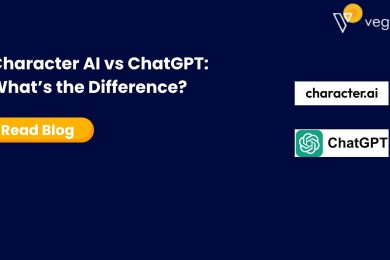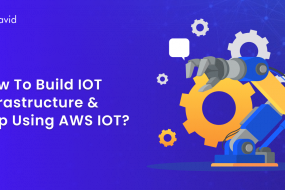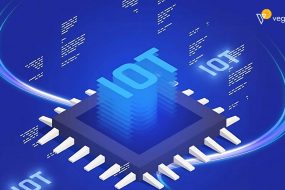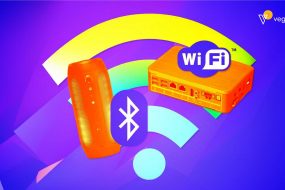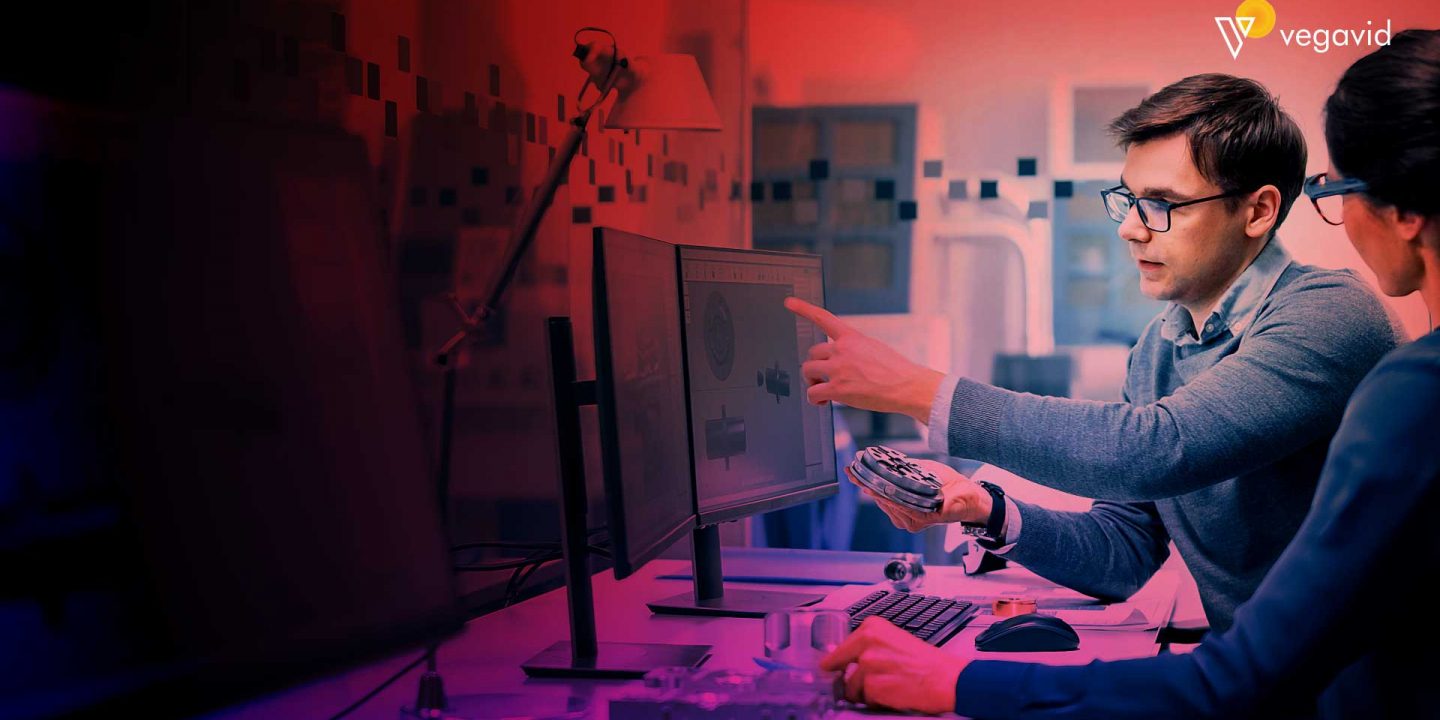
The Internet of Things (IoT) has rapidly grown in scope and impact over the past decade. Connected devices have infiltrated almost every aspect of our lives, from smart homes and cities to supply chain management and healthcare. Driving this connected revolution are IoT engineers. These are multidisciplinary professionals responsible for conceptualizing, developing, and managing the technologies and solutions underpinning the IoT ecosystem. In this blog, we explore the evolving role of an IoT engineer and diverse skills. They require these skills to innovate at the intersection of software, hardware, sensors, networking, and more.
What is an IoT?
The Internet of Things, commonly referred to as IoT, refers to the network of physical objects or “things” embedded with electronics, software, sensors, and connectivity to enable Internet connectivity and the exchange of data. IoT involves connecting everyday devices like home appliances, vehicles, and other items to the Internet through various network technologies like Wi-Fi, Bluetooth, radio frequency identification, and other protocols.
With IoT, these physical objects are able to collect and exchange data, allowing them to be monitored, controlled, or activated remotely across existing network infrastructure. Estimates show there will be over 41.6 billion connected IoT devices by 2025, underscoring its potential to revolutionize numerous sectors like healthcare, transportation, industrial systems, and more.
At its core, IoT is about gathering and analyzing data from real-world environments and taking actions based on that data to improve efficiency, accuracy, and convenience in many areas of our lives.
What Does an IoT Developers Do?
An IoT developer, also known as an IoT engineer, works on developing connected solutions, devices, and platforms. Their key responsibilities include:
1. Application design and development
As the liaison between the physical and digital worlds, IoT engineers are responsible for designing and developing both hardware-focused embedded applications along with front-end and back-end software. On the embedded systems side, they program microcontrollers and write firmware for devices. For the front end, developers create intuitive interfaces and dashboards using technologies like HTML, CSS, and JavaScript to view and interact with connected products.
The back end encompasses developing application programming interfaces (APIs), databases, and middleware using languages like Python, C#, PHP, etc. to support data capture, storage, processing, and automation. They integrate these applications with operating systems, cloud platforms, databases, and existing IT systems to form cohesive end-to-end IoT solutions. Debugging and testing ensure that developed applications meet industry standards for quality, reliability, and performance.
2. Ensuring Security
As networks of devices proliferate, cybersecurity is a top priority area for iot engineering. They have in-depth knowledge of security best practices, protocols, and technologies to protect IoT systems and the data they generate. Developers implement multi-factor authentication and access control mechanisms to restrict unauthorized access and privileges. Encryption standards like TLS are applied to transmitted data for confidentiality and prevention of snooping.
Techniques involving blockchain, digital signatures, and hardware tokens help boost device identity authentication. IoT solutions are stress-tested using vulnerability assessments and penetration testing. Developers also stay up-to-date on the latest threats like DDoS attacks, ransomware, etc. with continued training. Their security expertise ensures networked products and infrastructure are robust enough to mitigate the risk of exploits and data breaches.
3. Integrating with cloud platforms
Leveraging cloud platforms is critical to scaling IoT solutions. IoT engineers are well-versed in deploying services and infrastructure on public, private, or hybrid clouds. They configure cloud storage, databases, and servers to reliably capture massive streams of data from endpoints. Real-time data processing, advanced analytics, and visualizations are managed using cloud-hosted big data services. Developers develop backend APIs and services using serverless computing for flexible scaling.
They integrate solutions with cloud services for identity and access management, automatic software updates/backups, and monitoring. IoT products are tested to ensure robustness, high availability, and responsiveness when hosted in the cloud. Network configurations allow devices to seamlessly interface with cloud-based systems. Cloud computing optimizes IoT systems for offsite manageability, redundancy, and accessibility worldwide.
4. Developing IoT devices
Deriving valuable business insights from IoT data is crucial for strategic decision-making. IoT engineers understand client needs and translate technical information into actionable intelligence tools. They analyze sensor readings and network performance indicators to surface trends, correlations, and anomalies across key metrics. Developers design customizable visual dashboards, reports, and alerts using Business Intelligence (BI) tools to provide visual context to operational data.
Graphics highlight operational efficiency, asset utilization, energy consumption patterns, and more. Insights gathered from IoT systems can help optimize processes, predict demand better, preempt issues, and aid long-term planning. Engineers also develop optimization models for predictive maintenance, demand forecasting, and overall improvement of production systems. BI tools empower non-technical users to comprehend IoT contributions to their organization.
5. Networking with IT infrastructure
Networking is fundamental to enabling communication between IoT devices and integration with existing IT infrastructure. IoT engineers have comprehensive knowledge of networking protocols like Bluetooth, WiFi, Zigbee, MQTT, and 6LoWPAN used at different layers. They design robust network architectures considering factors like coverage area, data rates, security, and power efficiency.
Developers evaluate the suitability of various protocols for specific industry applications. Skills in rolling out gateway devices, routers, and edge computing allow seamless routing of data to target systems. Network configuration expertise ensures reliability even under constrained environments. IoT engineers also test for vulnerabilities during development. Network troubleshooting and documentation skills help deploy and support large-scale solutions across geographical regions.
6. Designing UX/UI
As an IoT solution involves both hardware devices as well as interactive software components, UX/UI design plays an important role for an IoT developer. They are responsible for conceptualizing and designing user interfaces that allow humans to seamlessly interact with various IoT devices and platforms. This includes the app interfaces through which users will configure, control and monitor their connected devices and extract useful insights from the generated data.
The developer ensures the designing of intuitive and easy-to-use interfaces keeping in mind factors like target users, device types, and contexts of use. Right from wireframing to prototype development to visual design, they use UX research and design principles to create appealing and functional interfaces that offer a high-quality user experience. The goal is to embed smart functionality into devices without overwhelming the user with complex technical details.
7. Writing embedded software
Sensors form the backbone of any IoT system as they are responsible for capturing real-world data from the surrounding environment. An IoT developer must have thorough knowledge about various types of sensors like temperature, motion, light, pressure, location, etc., and how to interface them with microcontrollers or gateways. They need to carefully select the appropriate sensors based on the requirements of the IoT application.
The developer also works on integrating these sensors into devices in a way that ensures reliable data collection over long periods of time despite external factors like temperature changes, dust, humidity, etc. Resolving sensor issues quickly is critical as the whole IoT solution depends on the steady streaming of quality sensor readings. The developer also programs the sensors and handles sensor data processing, aggregation, and formatting before it is transmitted to various systems via IoT networks and platforms.
How To Become An IoT Engineers?
To excel as an IoT engineer, you’ll need a strong foundation in various technical disciplines. Here are some key skills:
Hardware Skills:
- Microcontroller programming: Proficiency in programming microcontrollers like Arduino, Raspberry Pi, or ESP32 to control hardware components.
- Circuit design: Understanding of basic electronic components and circuit design principles to create custom hardware solutions.
- Sensor and actuator knowledge: Familiarity with various sensors (temperature, humidity, motion, etc.) and actuators (motors, relays, LEDs) to interact with the physical world.
Software Skills:
- Programming languages: Proficiency in languages like C, C++, Python, and Java for embedded systems and application development.
- Embedded systems: Knowledge of real-time operating systems (RTOS) and embedded systems programming techniques.
- Cloud computing: Understanding of cloud platforms (AWS, Azure, Google Cloud) for data storage, processing, and analysis.
- Data analytics: Skills in data processing, analysis, and visualization using tools like Python (Pandas, NumPy, Matplotlib) or R.
- Machine learning: Knowledge of machine learning algorithms to extract insights from IoT data.
- Network protocols: Familiarity with network protocols like TCP/IP, MQTT, and CoAP for device communication.
- Security: Understanding of security principles and practices to protect IoT devices and data.
Education and Certifications:
An IoT developer is responsible for designing, developing, and deploying software and hardware solutions for the Internet of Things (IoT). While a formal degree is not always mandatory, a relevant education can provide a strong foundation. Consider these options:
- Bachelor’s Degree: A bachelor’s degree in computer science, electrical engineering, computer engineering, or a related field can be a good starting point.
- Master’s Degree: A master’s degree can specialize your knowledge in specific areas like embedded systems, IoT, or data science.
- Certifications: Consider certifications like Certified IoT Professional (CIOTP) to validate your skills and knowledge.
The IoT field is rapidly evolving, so continuous learning is crucial. Stay updated with the latest technologies, trends, and best practices. Attend conferences, workshops, and online courses to expand your skillset.
By combining strong technical skills, a solid educational foundation, and a passion for innovation, you can embark on a rewarding career as an IoT engineer.
Conclusion
To summarize, an IoT engineer wears many hats – from designing secure and scalable systems to integrating sensors and developing intuitive interfaces. It is a challenging but immensely rewarding role for those interested in cutting-edge technologies with real-world applications. Constant learning and adaptability are key as IoT continues to merge into new verticals at a rapid pace. With their unique blend of technical skills combined with business understanding, IoT engineers will remain at the forefront of driving our increasingly connected world towards a more optimized, automated and intelligent future. Overall, being an IoT engineer is all about applying creativity and problem-solving abilities to develop practical yet transformative IoT solutions.





